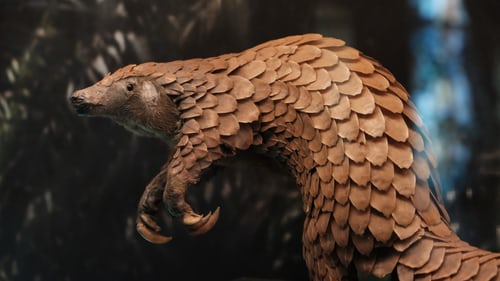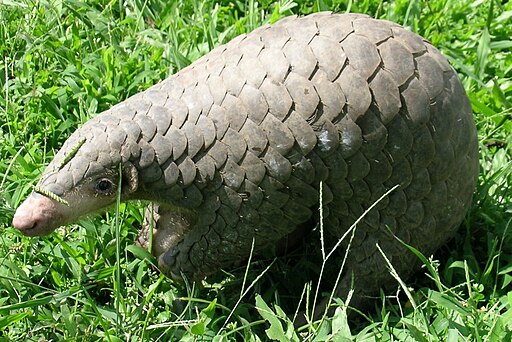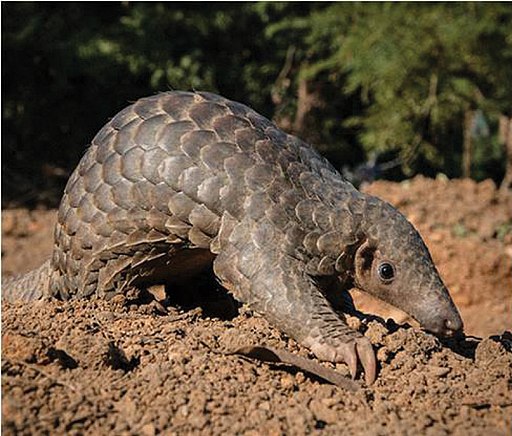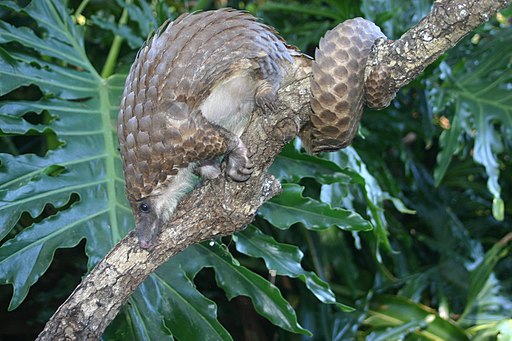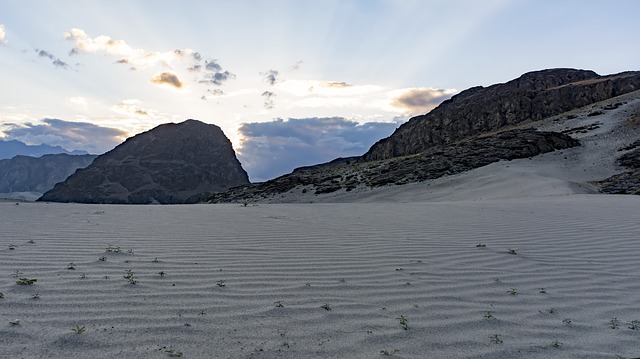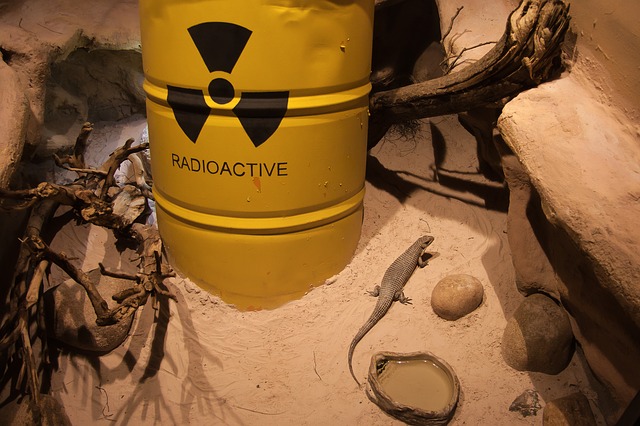Introduction
Pangolin is not a reptile but a mammal. The reason for this confusion is due to its appearance. The body of a pangolin is covered with scales that are made of Keratine protein found in fingernails, horns, and hair. The scales serve the purpose of protection from wild predators.
This animal varies in size from 30 to 100 centimeter and lives in burrows or hollow trunks of trees. It is also famous as a nocturnal and scaly anteater animal. Pangolin uses smelling sense to find its prey and feeds on small insects including ants using its tongue and is generally active at night.
You may also like: 12 Vulnerable and Endangered Animal Species of Pakistan
Classification and IUCN Status of Pangolin Species
Pangolin currently has been classified in eight species around the world mainly found in Asian and African countries. Out of the eight known species of pangolin four species living in Asia are as follows:
Common English Name: Chinese pangolin
Scientific Name: Manis pentadactyla
IUCN Status – Critically Endangered
Common English Name: Indian pangolin
Scientific Name: Manis crassicaudata
IUCN Status– Endangered
Common English Name: Sunda pangolin
Scientific Name: Manis javanica
IUCN Status – Critically Endangered
Common English Name: Philippine pangolin
Scientific Name: Manis culionensis
IUCN Status – Endangered
The other four living in Africa are as follows:
Common English Name: White-bellied pangolin
Scientific Name: Phataginus tricuspis
IUCN Status – Vulnerable
Common English Name: Black-bellied pangolin
Scientific Name: Phataginus tetradactyla
IUCN Status – Vulnerable
Common English Name: Giant pangolin
Scientific Name: Smutsia gigantea
IUCN Status – Vulnerable
Common English Name: Ground pangolin
Scientific Name: Smutsia temminckii
IUCN Status – Vulnerable
According to IUCN RED List, all eight species of Pangolin were classified as threatened along with extinction. Pangolin species are facing threats due to habitat loss, illegal trade, hunting, poaching, etc.
Reasons for Illegal Trade
Pangolin is the most famous trafficked animal. The reasons for illegal trade include its valuable body parts and scales. It is illegally traded to other countries where people consume its meat. It is also used in medicine.
Also read a related article: Illegal Wildlife Trade in Pakistan – Threat to Endangered Species
Uses of Pangolin Scales
The scales are used for various purposes such as making rings, lucky charms, and crushed dried scaled in medicine. The skin of pangolin is also used for the production of leather products such as bulletproof jackets, shoes, boots, etc.
Ban on Illegal Trade of Pangolin by CITES
In 2016 during the 17th meeting, the Conference of Parties in Johannesburg, South Africa, the Convention on International Trade in Endangered Species (CITES) of Wild Fauna and Flora suggested putting a ban on the illegal trade of Pangolins.
Check out: 12 Vulnerable and Endangered Animal Species of Pakistan
Pangolin in Pakistan
The Indian Pangolin species is indigenous in Pakistan and is found in Kashmir, Punjab, Sindh, and Baluchistan. Previously the pangolins were living in the forest area of Sindh but due to increased vegetation land with improved irrigation systems, they migrated to other areas such as Koh-e-Sulaiman in Sidh near Balochistan.
The ecological researches show the declining number of pangolins due to illegal trade, hunting, poaching for scales and meat.
Conservation of Pangolin in Pakistan
In previous years, people were scared of this scaly animal. In an incident, people captured this animal and later realized that the animal fed on ants. However, according to the WWF survey that was carried out in different cities came to conclusion that this animal is being smuggled to other countries and needs protection due to decreasing numbers.
Also check out: Endangered and Critically Endangered Animals of Pakistan
WWF in Pakistan
World wildlife fund organization is actively doing efforts to conserve Pangolins found in Pakistan. The efforts include market-based surveys concerning trades and exploring the current habitats in order to keep a record of illegal trade and poaching. The so far good initiative by WWF is involving the residential community in order to create awareness among the public, and make people understand the role of Pangolin in the sustenance of the ecosystem. The organization is trying to make local conservation zones for Pangolins.
Ecological Importance of Pangolins
The anteaters- Pangolins are playing a crucial role in the sustenance of the ecosystem. They consume almost 70 million small insects annually and act as natural pest controllers. They also assist soil in improving texture and physical properties making it more productive for crops.
Also read: Endangered and Critically Endangered Bird Species of Pakistan
Recommendation
There should be proper legislation for wildlife protection. The Government of Pakistan should impose a ban on the illegal trade of wildlife.
Also check out:
Endemic or Native Mammal Species of Pakistan
Endemic or Native Bird Species of Pakistan
Endemic or Native Reptile Species of Pakistan
Endemic or Native Amphibian Species of Pakistan
Endemic or Native Fish Species of Pakistan
Endemic or Native Plant Species of Pakistan
I hope you all liked this post! Please comment below if you have any suggestions, comments, or feedback! We at #envpk love hearing from our readers! Thanks!

